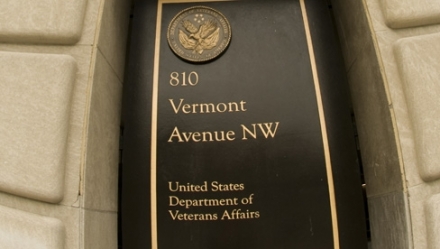Amazing that for decades these C-123s have always been "the Agent Orange airplanes" in every government memo, publication, court case, email...everything. The airplanes were destroyed, as approved by the Air Staff, specifically because everyone agreed they were toxic. Government memos (Davis-Monthan AFB and Hill AFB) specified the destruction be conducted with low visibility in case veterans learned about the problem and sought medical care. Officials from the Office of Secretary of Defense, key decision makers in this process, referred to the veteran aircrews as "trash-haulers, freeloaders looking for a tax-free dollar from a sympathetic congressman." I thought we were veteran flyers who'd earned the Country's respect...we certainly don't have OSD's.
Decades of "The Agent Orange Airplanes!" That is, until the first veteran's claim was filed! Then, by magic or other process, suddenly no Agent Orange at all!
Ignoring well-founded military investigations completed over a period of four decades, and completely ignoring the professional input from acknowledged experts whose work the IOM has depended upon for over a decade, IOM caved to these two agencies and opted out of a promised special study. This study was promised to the veterans by officials of the VA's Public Health at our meeting with Senator Burr's staff this April.
Riding on the back of the Air Force report issued in late May, VA on 20 June amended their Internet description of the C-123 Agent Orange issue. They incorporated the three basic (and erroneous) findings of the AF report, and used that to pressure IOM into dropping our issue.
Last year, the VA merely conducted a survey of the sparse literature and, by ignoring all positive evidence such as the Air Force's own finding of "heavily contaminated" and "a danger to public health," and ignoring the many universities and toxicologists who've challenged the VA position, the Department of Veterans Affairs used weak assumptions to construct their barrier to veterans' claims for exposure. To date, only the Air Force and the VA defend the position that contaminated C-123 aircraft didn't expose crews to dioxin. To date, every other government agency and outside expert have claimed crews were exposed.
 |
| CDC Agency Reports Aircrews Exposed! |
 The AF and VA both blatantly ignored the finding of the deputy director of the CDC's Agency for Toxic Substances and Disease Registry which concluded aircrews and maintenance personnel were exposed to harmful levels of dioxin. The VA and AF even ignored the gold-standard Army technical manual! After agreeing to place great weight on whatever the Air Force study revealed, the VA's 20 June release was immediately propagated throughout the professional literature in an attempt to construct a general belief in the field that their view is the correct one. It will take a peer-reviewed article to challenge this and we understand it is on the way!
The AF and VA both blatantly ignored the finding of the deputy director of the CDC's Agency for Toxic Substances and Disease Registry which concluded aircrews and maintenance personnel were exposed to harmful levels of dioxin. The VA and AF even ignored the gold-standard Army technical manual! After agreeing to place great weight on whatever the Air Force study revealed, the VA's 20 June release was immediately propagated throughout the professional literature in an attempt to construct a general belief in the field that their view is the correct one. It will take a peer-reviewed article to challenge this and we understand it is on the way!Veterans do agree with each report's conclusion that passengers and others with occasional, non-professional involvement with the C-123 were extremely unlikely to have had any exposure to dioxin.
















